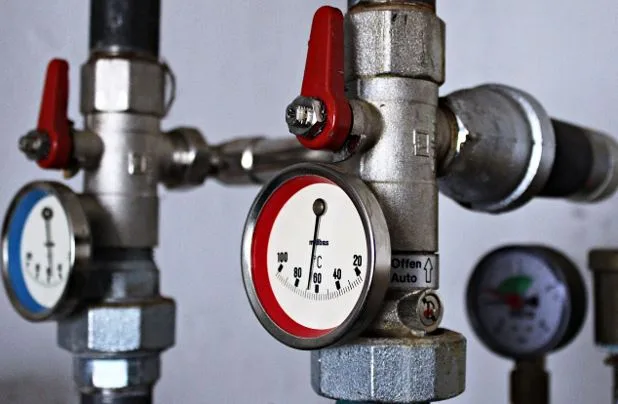Keeping Your Heating System in Top Shape Before the Winter Season Starts
Cool breezes, shorter days, and the faint smell of wood smoke are all signs that the colder season is on its way. As autumn fades, the shift from mild to chilly weather can happen almost overnight. Many households begin relying on their heating systems again, expecting them to work perfectly after months of rest.
Residents of Lafayette, LA, know how quickly the temperature can swing once fall deepens. Those first crisp evenings often remind homeowners how essential a dependable heating system truly is. Regular servicing helps reduce breakdowns, control energy costs, and keep the entire home evenly warm. Preparing your heating system before the winter season begins saves you from unexpected problems later on. Let’s look at a few ways you can keep your heating system in top shape and ready for the colder months ahead.
1. Schedule a Pre-Winter Inspection
An early inspection is one of the smartest steps to prepare your heating system. A certified HVAC technician can identify problems that might not be visible, such as loose connections, worn components, or airflow restrictions. Small issues left unchecked can become costly repairs later on.
A professional inspection usually covers thermostat calibration, safety controls, filters, and mechanical parts. Technicians also look for leaks and test efficiency to ensure your system performs as it should. Having this done before the cold weather sets in gives you confidence that your heating system will work reliably when you need it most.
2. Get Boiler Maintenance Done Early
Boilers often serve as the heart of a home’s heating system. They supply steady, even warmth that many Lafayette homeowners rely on during chilly evenings. Because they work quietly and efficiently, it’s easy to forget how much strain they take on during winter. Over time, mineral deposits, air buildup, or worn components can cause a drop in performance.
Regular maintenance keeps a boiler running at its best. Technicians can identify early warning signs, clean internal parts, and make adjustments that keep the system efficient and safe. Routine servicing also helps lower energy consumption, which means lower bills throughout the colder months. If you’re looking for boiler maintenance in Lafayette, LA, now’s the perfect time to get it done before the temperatures drop.
3. Replace or Clean Air Filters
Air filters play a major role in how well your system performs. A dirty or clogged filter restricts airflow, forcing the unit to work harder than necessary. That extra strain can shorten the system’s lifespan and increase energy consumption.
Homeowners should check filters at least once a month and replace them every one to three months, depending on usage and air quality. Clean filters help maintain better air circulation, keep dust from accumulating inside the system, and improve indoor air quality. This small, inexpensive task can make a noticeable difference in both comfort and efficiency.
4. Inspect and Seal Air Ducts
Leaky air ducts are one of the biggest sources of energy loss in heating systems. Warm air escaping through cracks or gaps means your furnace or boiler has to work harder to reach the desired temperature. Over time, that leads to uneven heating and higher energy bills.
A visual inspection can reveal obvious gaps, loose connections, or damaged insulation. Homeowners can seal small leaks with foil tape or mastic sealant, while larger problems may need professional attention. Properly sealed ducts allow your system to deliver consistent warmth throughout every room, making your home feel more comfortable and reducing wasted energy.
5. Test the Thermostat and Settings
The thermostat acts as the brain of your heating system, and a small malfunction can lead to big inefficiencies. Testing it before winter ensures the system responds correctly and maintains the right temperature.
Modern programmable and smart thermostats can help save energy by automatically adjusting temperatures when you’re asleep or away. For older models, replacing worn batteries and recalibrating temperature settings can make a significant improvement. A properly working thermostat not only controls comfort but also helps the entire system operate more efficiently.
6. Clean Vents and Registers
Dust and debris often collect around vents and registers during the warmer months when the heating system isn’t in use. Once the heat turns on, that buildup can block airflow and spread allergens throughout the house. A quick cleaning before winter makes a noticeable difference in how efficiently warm air circulates.
Vents can be vacuumed using a soft brush attachment to remove dust and pet hair. Registers should also be wiped down to clear away surface dirt. Furniture, curtains, or rugs should not block vents, as this limits the flow of warm air.
7. Check Carbon Monoxide Detectors and Safety Features
Safety should always come first when preparing for the heating season. Systems that run on gas or oil can produce carbon monoxide if something malfunctions. Because this gas is colorless and odorless, detectors are the only way to know if it’s present in your home.
Every homeowner should test carbon monoxide detectors before winter and replace batteries if needed. Detectors typically last five to seven years, so checking the manufacture date ensures they are still reliable. Along with this, technicians should inspect flue pipes, exhaust vents, and burners to confirm there are no blockages or leaks.
8. Keep an Eye on Energy Efficiency
Energy efficiency goes hand in hand with system performance. Even a well-maintained heater can waste energy if the home itself isn’t insulated properly. Simple steps can help keep warm air inside where it belongs and reduce the load on your heating system.
Weatherstripping around doors and windows keeps drafts out, while adding insulation to attics or crawl spaces prevents heat loss. Curtains or thermal blinds can also make a noticeable difference when closed at night. Homeowners should monitor monthly energy bills as well; a sudden increase can signal that the system needs attention.
Preparing a heating system before the chill of winter sets in is one of the best investments a homeowner can make. No one wants to face a sudden cold snap with a malfunctioning heater. Taking the time to schedule inspections, replace filters, clean vents, and test thermostats ensures your system performs efficiently when it matters most.
Regular maintenance also extends the life of your heating equipment and keeps utility bills manageable. Just as importantly, safety checks like inspecting flues and testing carbon monoxide detectors protect your household from hidden risks. Staying ahead of seasonal maintenance means fewer surprises, lower energy costs, and a warm, welcoming home all winter long.





